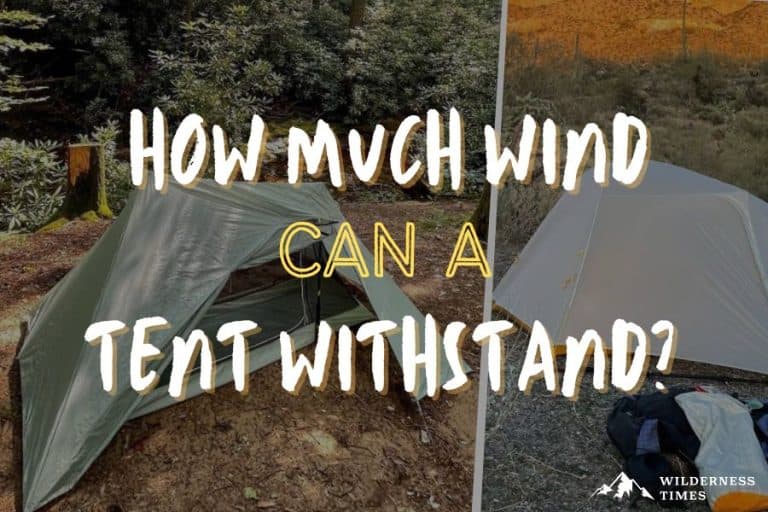Wind can make or break a camping trip. How much wind your tent can withstand is an important factor to think about before you head out on your trip.
Too much wind can tear up your tent and break your equipment – and sometimes, your spirit.
There are two key factors to keep in mind when thinking about tents and wind resistance: size and shape.
When it comes to wind, you’ll want to bring tents that are lower to the ground and shaped to divert wind, not catch it.
Some backpacking tents can withstand up to 45 mph winds, but most standard tents can only handle up to 20 – 30 mph.
With the right tent, you’ll be able to camp even in moderately windy conditions.
But without it…you may be in for a rough camping trip!
What wind is too strong for tent camping?
Most tents can handle moderate winds (20-30 mph) with some additional wind resistance measures.
But once winds reach sustained speeds of 30 to 40 miles per hour, it is too strong to be tent camping.
| Speed | 10 – 20 mph | 20 – 30 mph | 30 – 40 mph |
| Definition | Light Breeze | Moderate Winds | High Winds |
| Camping Safety | Safe to camp | Safe to camp using added wind resistance measures | Unsafe to camp |
Factors Affecting Tent Wind Resistance
Tent Size & Dimensions

As we mentioned above, the two main aspects to pay attention to for wind resistance are size and shape.
First, the smaller the tent, the less wind will have a chance to “get caught” on the structure.
An important aspect to keep in mind is a tent’s peak height, or how high off the ground the tallest point of your tent is.
The lower your peak height, the closer to the ground you are, and the more stable your tent will be in high winds.
The second thing to think of is the shape of the tent or its paneling.
The most wind-resistant tents have several panels that slope down to the base (think dome tents).
This allows them to divert wind, rather than catch wind like a sail as long, flat sides can.
Tent styles that WILL generally perform well in strong wind:
- Dome Tents
- Geodesic Tents
- A-frame Tents
- Bell Tent
Tents styles that will generally NOT perform well in strong winds:
- Cabin Tents
- Instant Tents
- Tents with Screen Houses
Of course, wind performance will vary tent by tent. So it’s not everything, but certainly starting off with a good design will get you off to a good start.
Fabric Tension & Tautness
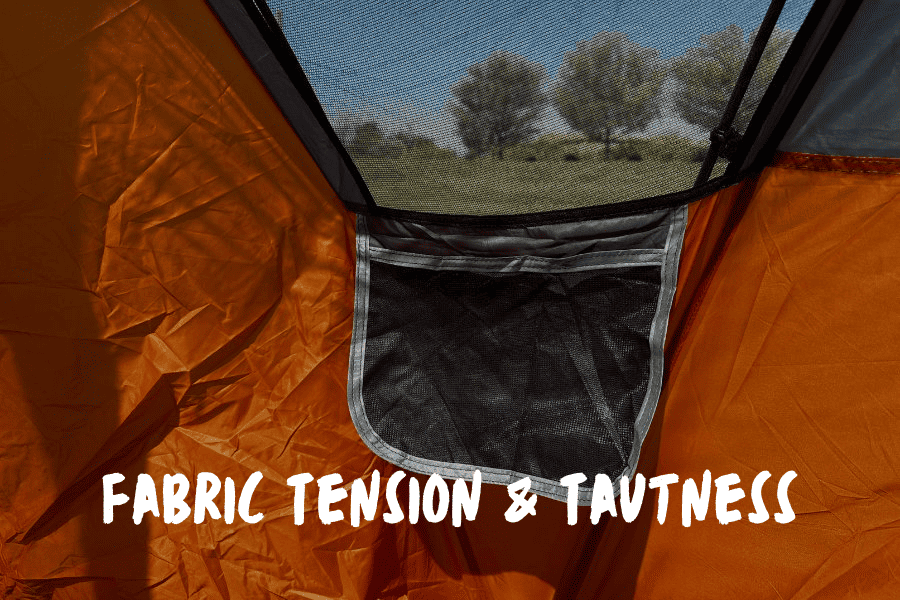
The last thing you want to do is make your tent into a sail.
This is why it’s important to keep the fabric of your tent as taut as possible.
Fabric that’s pulled tight over the frame of your tent is less likely to catch wind that can harm your tent – or the people inside of it.
Stability Of Tent Poles & Frame
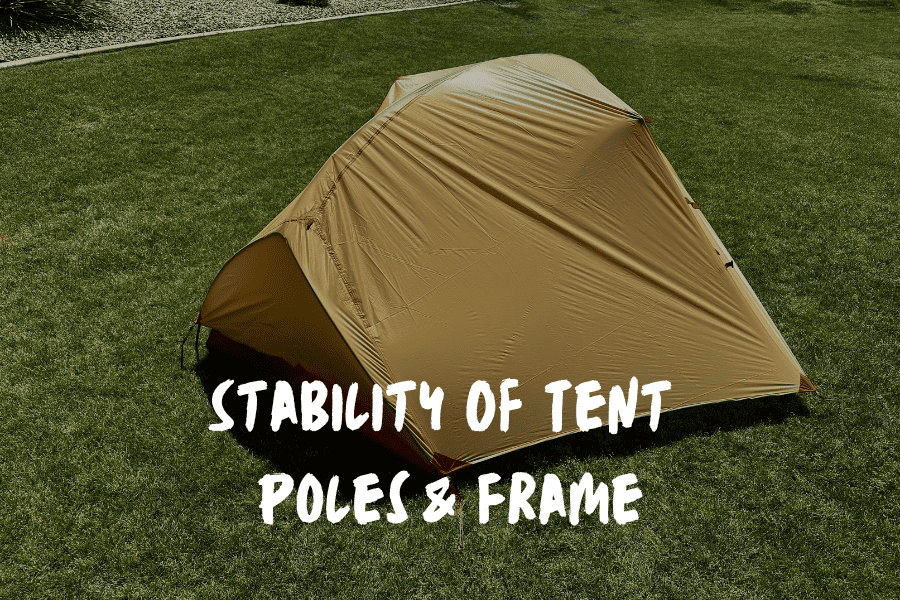
When camping in windy conditions, you want to make sure that your tent frame and poles are in good condition.
You also want to make sure they connect in all the right places.
Structural instability can lead to tents bending in the wind – and even broken poles!
When it comes to wind resistance, ultralight tents are not going to be the strongest competitors.
If you know you’re headed into windy terrain, make sure you bring a tent structure that won’t blow away.
This doesn’t have to mean grabbing your extra-heavy tent!
When I’m heading into windy environments, I generally bring my 2-person, double-walled tent, and extra stakes.
Read: How To Secure A Tent In High Winds
Properly Secured & Tensioned Guylines
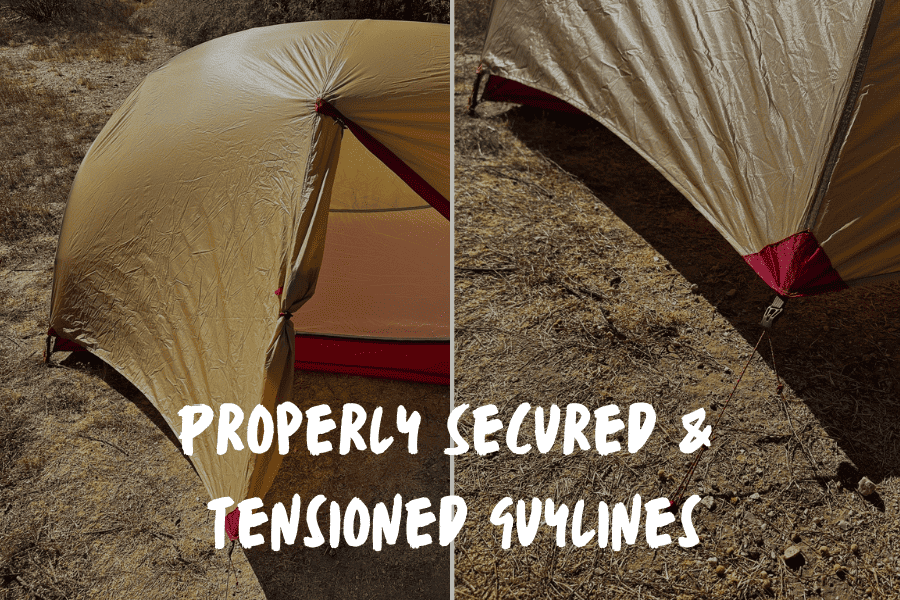
Once your tent is all set up, it’s absolutely mandatory that you stake and tie it down to make sure it’s safely and securely attached to the ground.
In windy conditions, it does not matter if your tent is normally able to stand up by itself (a.k.a. freestanding).
It still needs those stakes and guylines to keep it on the ground during big gusts of wind.
To properly set up your guylines, follow the directions specific to your tent model.
Especially if you’re in windy conditions, make sure you’re using ALL the guylines available to you.
Usually, this will include two guylines in the front, at least two in the back, and multiple on the sides.
The cords should be pulled tight. Any slack will make your tent structure vulnerable to the wind.
When securing to the ground, stake the guylines about two feet away from the base of the tent.
I recommend staking your guylines and covering the stakes with a heavy rock for extra security in especially windy conditions.
Pro-tip: NEVER place rocks along the edges of the tent itself! This will only make your tent more likely to rip in high wind conditions.
Enhancing Tent Wind Resistance
Windy conditions can come with a lot of complications.
The last thing you want after a long day of hiking is a wind-induced rip in your tent during a storm and the resulting soak that comes after!
Using Proper Tent Set-Up & Pitching Techniques
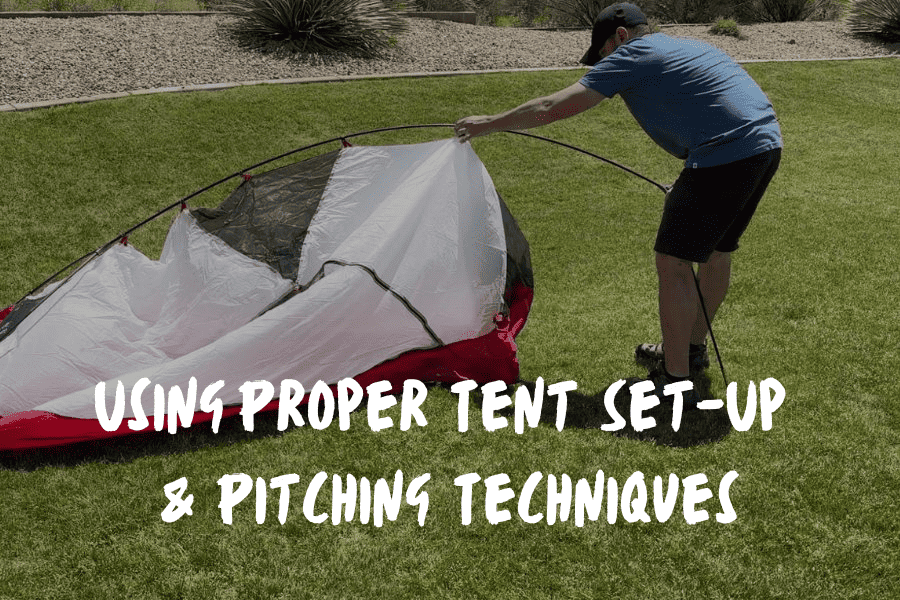
To avoid any wind-related calamities, it’s important to follow your tent set up and pitching instructions to a tee.
Making sure that your tent is set up and staked down is the first, most important step you can take in protecting yourself against the wind.
Reinforcing Tent Structure With Additional Guylines
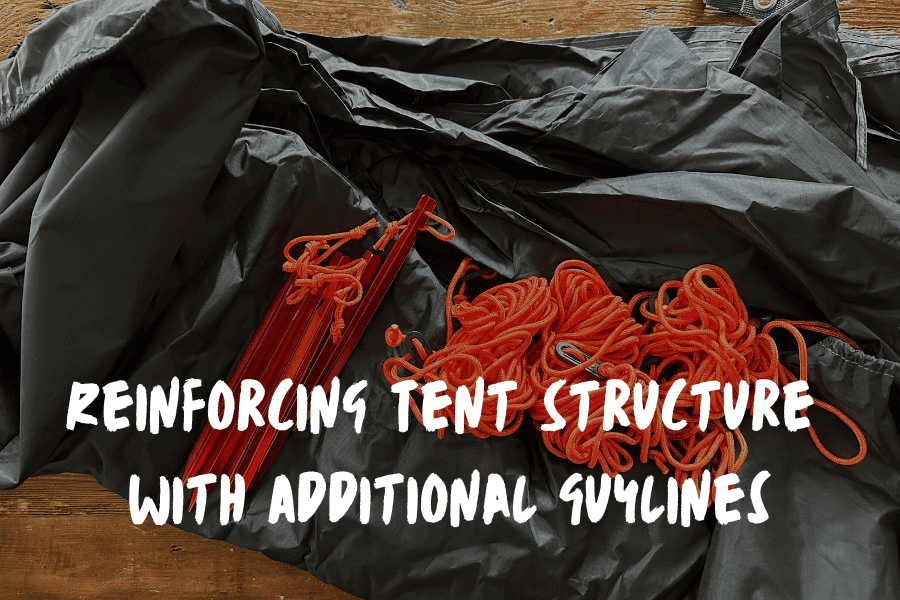
If the wind conditions are especially dicey, you can add more guylines to your initial set to further secure your tent structure to the ground.
Generally, these added guylines are placed closer to the top of the tent, whereas normal guylines will be placed along the sides.
Their placement is especially useful in windy terrain because they create more downward tension on your tent.
This will further secure you to the ground.
You’ll stake these guylines down the same way you’ll stake any other.
Although, as I mentioned above, I recommend adding a rock on top of the stake to further secure your structure.
Using Windbreaks Or Natural Barriers For Wind Protection
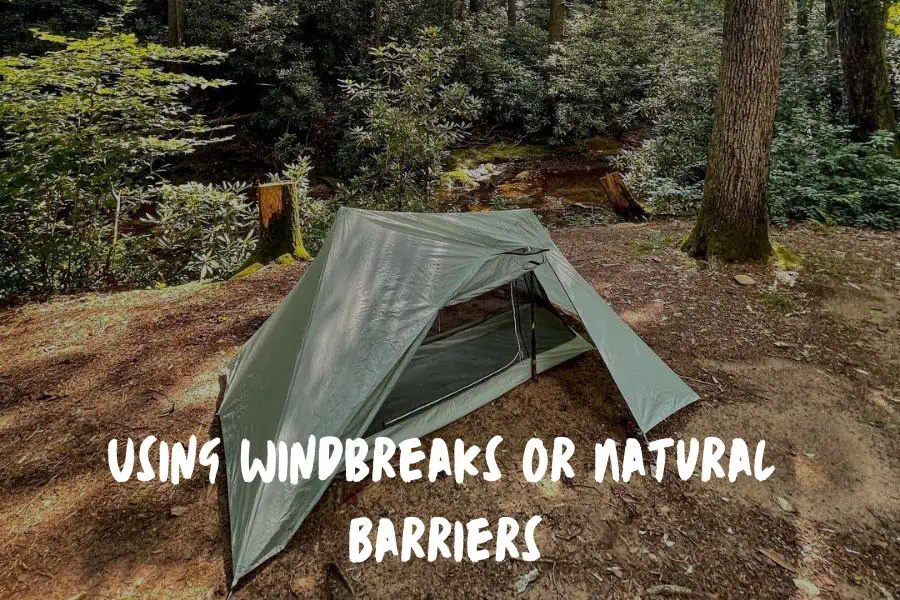
Sometimes when you’re camping, the environment around you can be used as a natural windbreak to protect you from the wind.
So, when you’re setting up camp in windy conditions, look out for natural barriers that will help divert wind from your tent.
These can be simple things like rocks, small hills, or low-lying bushes.
It’s important that these natural barriers are heavy and/or secured to the ground so that they’ll stand up to the wind on their own.
You wouldn’t want your “windbreak” blowing away on a windy night and damaging your tent – or taking you with it!
Choosing Sheltered Campsite Locations For Wind-Prone Areas
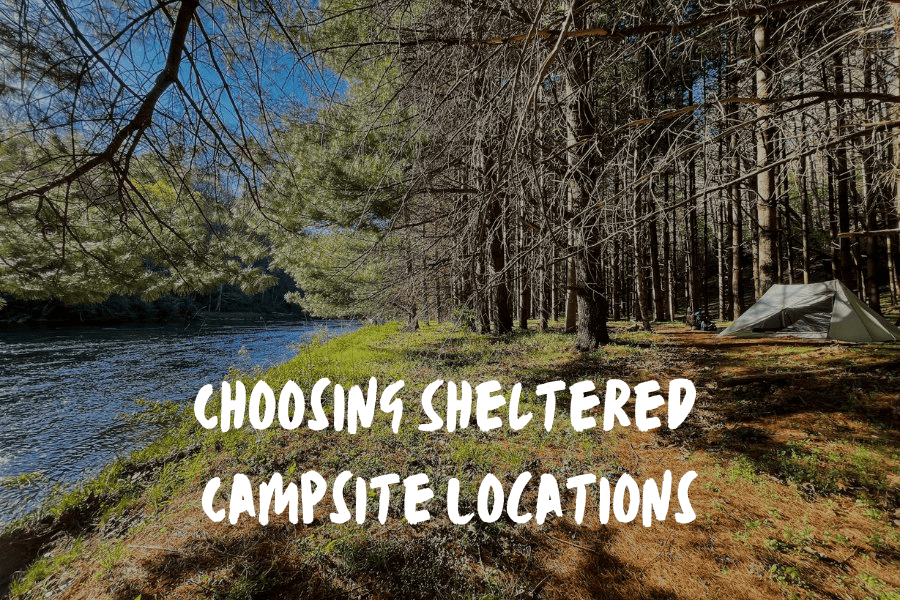
When choosing a campsite in windy conditions, I recommend staying away from extremes.
You don’t want to be somewhere too flat and barren, but you also don’t want to be somewhere too heavily wooded.
On flat plains, wind can hit you straight on with no barrier.
In heavily wooded areas, old trees can lose branches to the wind, which can hit and damage your tent (and those inside of it).
Therefore, I recommend finding a campsite that has multiple natural barriers when you camp in windy conditions.
This way, you can set up your tents within multiple windbreaks and further protect yourself and your campmates from the wind.
If you must camp in a wooded area, avoid setting up your tent directly under a tree, especially those that look older or more “scraggly.”
These trees are more likely to lose limbs in the wind.
Staying Prepared For Damage
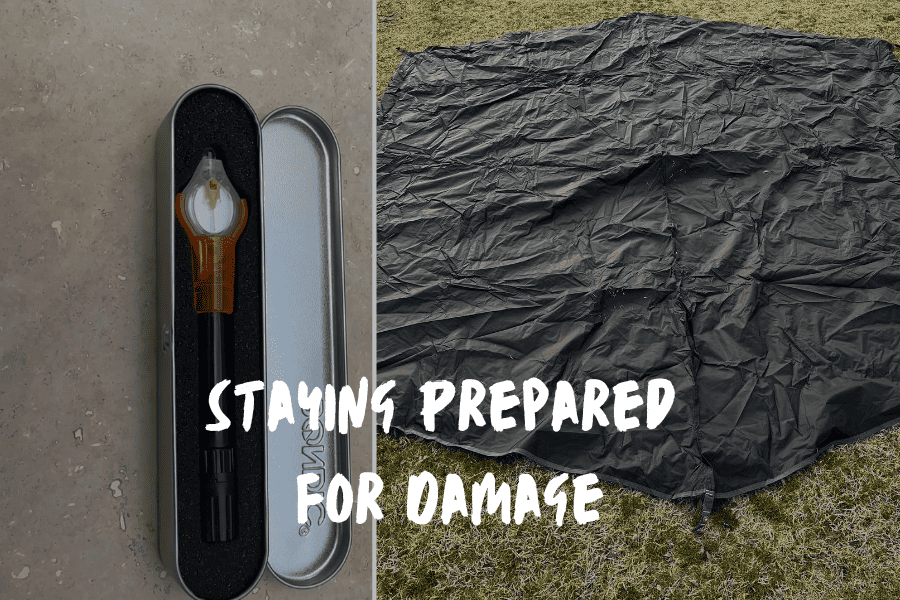
Even though we’ll do everything to prevent it, it’s best to be prepared in case wind does actually damage your tent.
Wind is too often accompanied by a storm, so I always bring a spare tarp, some plastic bags, and duct or climbing tape.
This helps prevent me from getting soaked with incoming rain if my tent does get a rip.
Also See: How to Fix a Broken Tent Pole in a Pinch (Tips & Tricks)
FAQs
What Is Considered Too Much Wind For A Tent To Withstand?
Most backpacking tents can withstand winds up to 35-40 mph. Kelty’s Grand Mesa can withstand up to 45 mph gusts.
However, once winds have reached 30-40 mph, it’s pretty much unsafe to camp. We don’t recommend it.
Can Wind Cause Structural Damage To A Tent?
Yes. If the wind is too strong, or if the tent is not secured properly for high wind conditions, structural damage can absolutely occur.
This is why it’s important to follow the setup procedures for your specific tent, and follow the tips above for added wind resistance.
Are There Any Tent Designs Specifically Built To Withstand Extreme Winds?
While most tents are built with multi-purpose use in mind, there are tent designs that are better in windy conditions than others.
The main features to look out for here are low peak height and sloped design. Here are the best tents we recommend for high winds.
How Does The Presence Of Large Rocks Or Other Obstacles Affect A Tent’s Wind Resistance?
Natural barriers like rocks or low-lying bushes can help divert wind from your tent and can help protect your campsite if you set up camp next to them.
When possible, I strongly suggest that you set up your tent next to a natural barrier in high wind conditions.
Can The Shape Of A Tent Impact Its Ability To Withstand Wind?
Yes, both the shape and size of your tent will affect its ability to handle high wind conditions.
First, you’ll want a tent that has a low peak height or is fairly low to the ground. You’ll also want a tent that has multiple unique sides.
I do not recommend tents that have long, flat sides because they can catch wind like a boat sail.
Instead, you’ll want a tent that has multiple, smaller panels that gently slope to the bottom of the design.
This way, the structure can divert wind around the tent, rather than catch it.
Are There Any Portable Wind-Blocking Devices Available For Tents?
Yes and no. There are a few portable wind blockers on the market, but they are generally heavy.
This can make them difficult to tote along on a long backpacking trip.
In their place, I recommend using the tent pitching and securing tips we detailed up above.
In Summary
Worried about the wind? Wondering, “How much wind can a tent withstand?” for your upcoming trip?
As long as the wind is under 20-30 mph, you should be able to safely camp using the techniques we’ve detailed above.
Happy camping!


